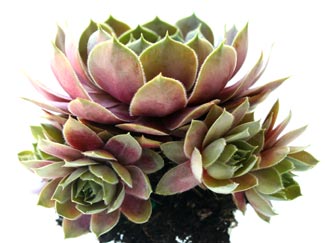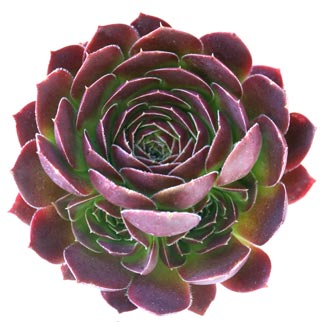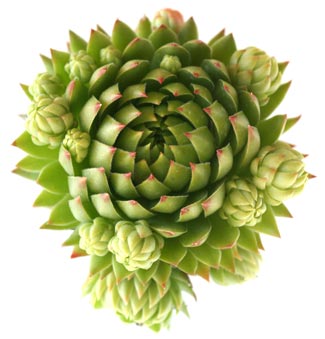|
Hen & Chicks Called Sempervivum Hens and Chicks are fun and easy to grow, yet there is enough variety to keep you entertained for a lifetime. With over 3,000 named sempervivum cultivars, these succulents are available in all colors, shapes, textures and sizes. |
|
|
Hens and Chicks are hardy and can be grown throughout the USA. Sempervivum like cool nights and need a cold-dormant season to be healthy. They prefer growing zones 4-8. In colder areas it may be beneficial to move the plants into a greenhouse or cover them during severe winter weather. Hairy cultivars & Jovibarba species also appreciate shelter from winter rain with a piece of glass or clear, hard plastic. |
|
|
Sunlight brings out bright colors in Sempervivums. When planted in full shade many varieties tend to fade to a plain green color. However, in hotter weather during the summer and in the southern United States, afternoon shade can actually help plant colors last longer. |
|
|
|
|
|
Immediately after transplanting, water generously. After that let the soil dry out between watering. These succulent plants are drought resistant since they store water in their leaves, but they still need water to thrive. During the summer heat they will need to be watered more frequently. Don’t over water. If you see your plants begin to struggle, make sure the soil drainage is good and cut back on the watering. |
|
|
Hen & Chick Plant Propagation There are three common types of Hens and Chicks: Sempervivum, Jovibarba heuffelii and Jovibarba Rollers. They are all often called Sempervivum, but each type produces offspring in a different manner. Sempervivum Jovibarba Rollers Growing from the offsets preserves the characteristics of each cultivar. Seeds taken from the Sempervivum flowers generally produce plants that are untrue to type.
Sempervivum Life and Death Cycle Once a hen plant produces a chick, that chick will begin producing its own babies after only 1 season. Sempervivum plants generally only live for 3 years, so the plants have 2 productive years before they die. After 3 years and having produced many baby plants a Sempervivum grows a tall center stalk that blooms before the plant dies. Cutting off the center stalk will not prevent the plant from dying. It is extremely fun to grow Hens and Chicks and watch them mature and produce offsets. Their colors change drastically throughout the season due to maturity, temperatures, sunlight exposure, and other factors. Be sure to give your plants enough space to spread. Ideally they should have 4” for small plants and 6-8” for large varieties. Adequate space produces nicely formed rosettes. |
 |
 |
|
 |
|
